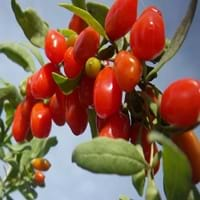Health Benefits
Anti depressant, Cancer prevention, Heart care, Muscle pain relief, Prevents constipation, Regulation of heart rate, Weight loss properties
Anti-oxidant properties, Eye care, Helps in cartilage regeneration, Regulates Blood Sugar, Treatment of osteoarthritis
General Benefits
Controls blood pressure, Eye care, Maintains healthy cholesterol level, Strengthens bones
Boosts immune system, Digestive aid
Skin Benefits
Anti-aging benefits, Heals sunburn, Skin rejuvenation, Treatment of acne, Treatment of skin diseases
Anti-aging benefits, Reduces wrinkles, Treatment of skin diseases
Hair Benefits
Good conditioner, Prevents hair loss, Softening mask
Protects hair, Regulates hair growth
Allergy Symptoms
Anaphylaxis, Coughing, Diarrhea, Eczema, Hives, Itching sensation in throat, Nausea, Skin Rashes, Runny nose, Sneezing, Swelling of mouth, tongue or lips, Vomiting, Wheezing
Anaphylaxis, Itching, Sneezing, Wheezing
Side Effects
Heart burn
May interact with some drugs
Best Time to Eat
Along with meal, Don't consume at night and before bed, Morning time (before lunch)
Any time except an hour after meal, Don't consume at night and before bed
Vitamin B5 (Pantothenic Acid)
Vitamin C (Ascorbic Acid)
Vitamin K (Phyllochinone)
Calories in Fresh Fruit with Peel
Calories in Fresh Fruit without Peel
Not Available
Not Available
Calories in Canned Form
Not Available
Type
Berry, Fruit vegetable
Berry
Season
All seasons
Autumn
Varieties
Better Boy, Early Girl, Beefsteak, Beefmaster, Pink Brandywinem, Caspian Pink, Thai Pinks, Hawaiian Pineapple, Kellogg’s Breakfast, Cherokee Purple, Black Ethiopian and Paul Robeson
No Types
Color
Green, Orange, Pink, Purplish black, Red, White, Yellow
Scarlet red
Taste
Sour, Sweet
Slightly bitter, Tart
Origin
Central America, South America
Unknown
Soil Type
Loam, Sandy loam
Well-drained
Climatic Conditions
Sunny, Warm
Cold, Hot
Facts about
- Around 10,000 varieties of tomatoes are grown in the world.
- In Buñol, people celebrate the Tomatina festival where around 1.5 lakh tomatoes are used.
- As per Guinness book of records, heaviest tomato weighed 3.51 kg.
- Study says a man named Li Qing Yuen used to eat goji berries daily and lived for 252 years.
- They are also known as wolfberries in India & China.
- This fruit is used for spiritual purposes at many places.
Other Countries
Brazil, Egypt, India, Iran, Italy, Mexico, Spain, Turkey, United States of America
Canada, France, India, United States of America
Top Importer
Nigeria
United States of America
Top Exporter
Netherlands
China
Botanical Name
Solanum lycopersicum
Lycium barbarum
Synonym
Lycopersicon esculentum
Wolfberry
Subkingdom
Tracheobionta
Tracheobionta
Division
Magnoliophyta
Unknown
Class
Magnoliopsida
Unknown
Subclass
Asteridae
Asteridae
Order
Solanales
Solanales
Family
Solanaceae
Solanaceae
Species
S. lycopersicum
L. barbarum
Generic Group
Nightshade
Not Available
Difference Between Tomato and Gojiberry
We might think that Tomato and Gojiberry are similar with respect to nutritional value and health benefits. But the nutrient content of both fruits is different. Tomato and Gojiberry Facts such as their taste, shape, color, and size are also distinct. The difference between Tomato and Gojiberry is explained here.
The amount of calories in 100 gm of fresh Tomato and Gojiberry with peel is 18.00 kcal and 32.00 kcal and the amount of calories without peel is Not Available and Not Available respectively. Thus, Tomato and Gojiberry belong to Low Calorie Fruits and Low Calorie Fruits category.These fruits might or might not differ with respect to their scientific classification. The order of Tomato and Gojiberry is Solanales and Solanales respectively. Tomato belongs to Solanaceae family and Gojiberry belongs to Solanaceae family. Tomato belongs to Solanum genus of S. lycopersicum species and Gojiberry belongs to Lycium genus of L. barbarum species. Beings plants, both fruits belong to Plantae Kingdom.









